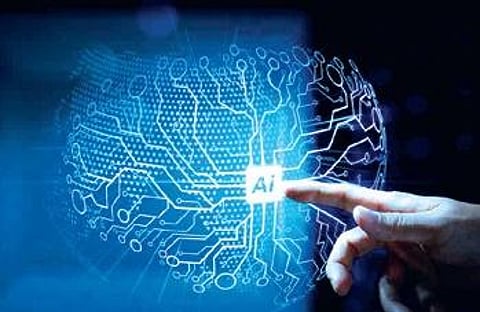

A move to tackle machine learning equivalent to memory loss in artificial intelligence (AI) systems has provided insights into bridging the gap between how a machine learns and how a human learns. The one thing that offers an advantage to humans is in possessing more adaptive memory than AI systems to various past situations or processes, which could probably get compromised in this attempt to make AI systems more human-like in memory functions.
This move has come from The Ohio State University’s computer scientists and engineers, who analysed how a process called “continual learning” affects overall performance. In this process, a computer is trained to learn a sequence of tasks continuously by using its accumulated knowledge from older tasks to better learn newer ones.
They found that when artificial neural networks get trained from older tasks to newer ones, there is a tendency to lose information gained from previous tasks. The researchers feel this could pose a problem as reliance on AI systems becomes increasingly accepted across human society in various domains. Ness Shroff, Ohio Eminent Scholar and professor of computer science and engineering at The Ohio State University says it is important that automated driving applications and robotic systems do not forget lessons they have already learnt.
His team’s research focuses on the complexities that continuous learning processes pose for these systems, and found insights that begin to bridge the gap between the learning processes between the machines and the humans. They have found that traditional machine learning algorithms which are trained on all the data at once should be discouraged; instead, a systematic order of teaching the algorithm should be adopted, besides training the AI with task similarities and positive and negative correlations of similar tasks. This, they feel, can increase the durability of the memory of AI systems.
Artificial photosynthesis for a greener future
Research at the Tokyo Institute of Technology (also called Tokyo Tech) has resorted to in-cell engineering of plants to significantly improve the process of photosynthesis artificially. In photosynthesis, plants capture energy from sunlight and produce oxygen and chemical energy from glucose. In this process, carbon dioxide and water are absorbed from the soil and air. Water is oxidised, through which its electrons are lost, while there is a reduction in carbon dioxide through a gain in electrons. This process converts water into oxygen and carbon dioxide into glucose.
The oxygen is released back into the air while storing the energy from the glucose molecules. These energy-filled glucose molecules are stored in organelles called chloroplasts, which are coated with thylakoid membrane, which is a light-absorbing pigment called chlorophyll. It is this chlorophyll that absorbs energy from blue and red light while reflecting green light — which gives plants and trees their green colour. This is also the reason why environmentalists are shouting hoarse for increasing plant and tree cover, using the term “greening”.
Tokyo Tech researchers have now developed a strategy producing hybrid solid catalysts based on protein crystals, and combining a simple in vitro process to produce catalysts for artificial photosynthesis. The protein crystals are orderly molecular structures with diverse properties and a huge potential for customization with the ability to assemble naturally from materials found within cells, which greatly reduces environmental impact.
They used an ingenious method, producing a highly active, recyclable, and thermally stable process to convert carbon dioxide into a formate upon exposure to light, mimicking photosynthesis albeit in a better manner. The process provides an effective and environmentally-friendly strategy for research in the areas of nanomaterials and artificial photosynthesis — not without hope for this effort to lead to a much greener future.